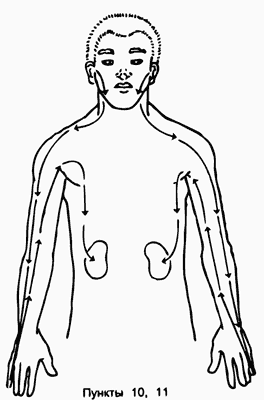The water element corresponds to pure yin energy, just as the fire element corresponds to pure yang energy. The element of water is the unifying force of the universe, through which internal relationships are realized. The corresponding internal yin organ is the kidneys, the corresponding yang organ is the bladder. Both organs are designed to control the “water” (i.e. fluids) in our body.
According to traditional Taoist texts, the color black corresponds to water. However, some Taoist schools (in particular, the one of which I am a representative) believe that water corresponds to a bright blue color. Therefore, when considering the element of water, I will use both blue and black. You are free to do the same. Most likely, the difference is due to the ancient system of corresponding elements to various animals. In our case, we are talking about the associative connections of the element of water with the “black turtle” and the “blue deer”. But let’s not complicate our lives, but choose either both colors or the one that suits us best.
| Hair type | Facial hair |
| Internal organ yin | Kidneys |
| Element | Water |
| Source | Sexual energy |
| Color | Blue (black) |
| External organ | Ears |
| Finger | Little finger |
| Part of the eye | Pupil |
| healing sound | Chew-hey |
| Yang organ | Bladder |
| Direction | North |
Taoists teach that the "great power of water" (as the main source of the element water) gave birth to the constellations of the Northern Hemisphere. Therefore, the direction of the water element should be considered north. The “collection point” is located in the perineum. Pure yin energy is associated with the “cold energies” of the body. You may have noticed that while the direction of the water element is north, the "gathering point" of this element is in the lower (south) part of the body, which corresponds to the direction of the fire element, which has its gathering point in the upper (northern) part of the body. This is exactly how the system of correspondences is described by Taoist sources and traditional Chinese medicine, in which the theory of the “five elements” is also widely used.
Below is a table of correspondences to the element of water.

1. Sit on a chair without touching its back. Hands are on your knees, feet are on the floor. You can perform the exercise in a static pose (supporting on one leg), which was discussed at the beginning of the lesson, or in any other pose that you have mastered.
2. Press the tip of your tongue against the roof of your mouth.
3. For 30 seconds, look continuously at an object (point) located at eye level. Close your eyes slightly and focus your gaze on the tip of your nose. Without looking up, look at it for 30 seconds. Move your point of concentration to the middle of the nasal septum and look at it for at least 10 seconds. Then mentally focus your attention on the third eye point for 30 seconds. (The time of concentration on specific points can be set at your own discretion. As you complete the exercise, you should feel increasing relaxation and tranquility.)
4. Smile at the left pupil.
5. Smile at the right pupil.
6. Feel how your whole face lights up with a smile, and its energy is directed into the pupils of your eyes.
7. Focus your attention on your facial hair and do the “facial hair breathing” exercise for at least a minute.
8. Feel the energy moving into your ears. Smile to your ears.
9. Start breathing with ear hairs.

10. Feel or imagine the connection that has arisen between the left ear and the left kidney, between points 7-9, the right ear and the right kidney.
11. Focus your attention on your ears again. Then lower your inner gaze down your neck to your shoulders and arms. Focus on the little fingers penetrating into the little fingers. Next, the energy flow penetrates through the hands into the chest. As you exhale, feel how the energy from the chest flows in two streams to the kidneys, establishing a relationship between the chest and the kidneys.



